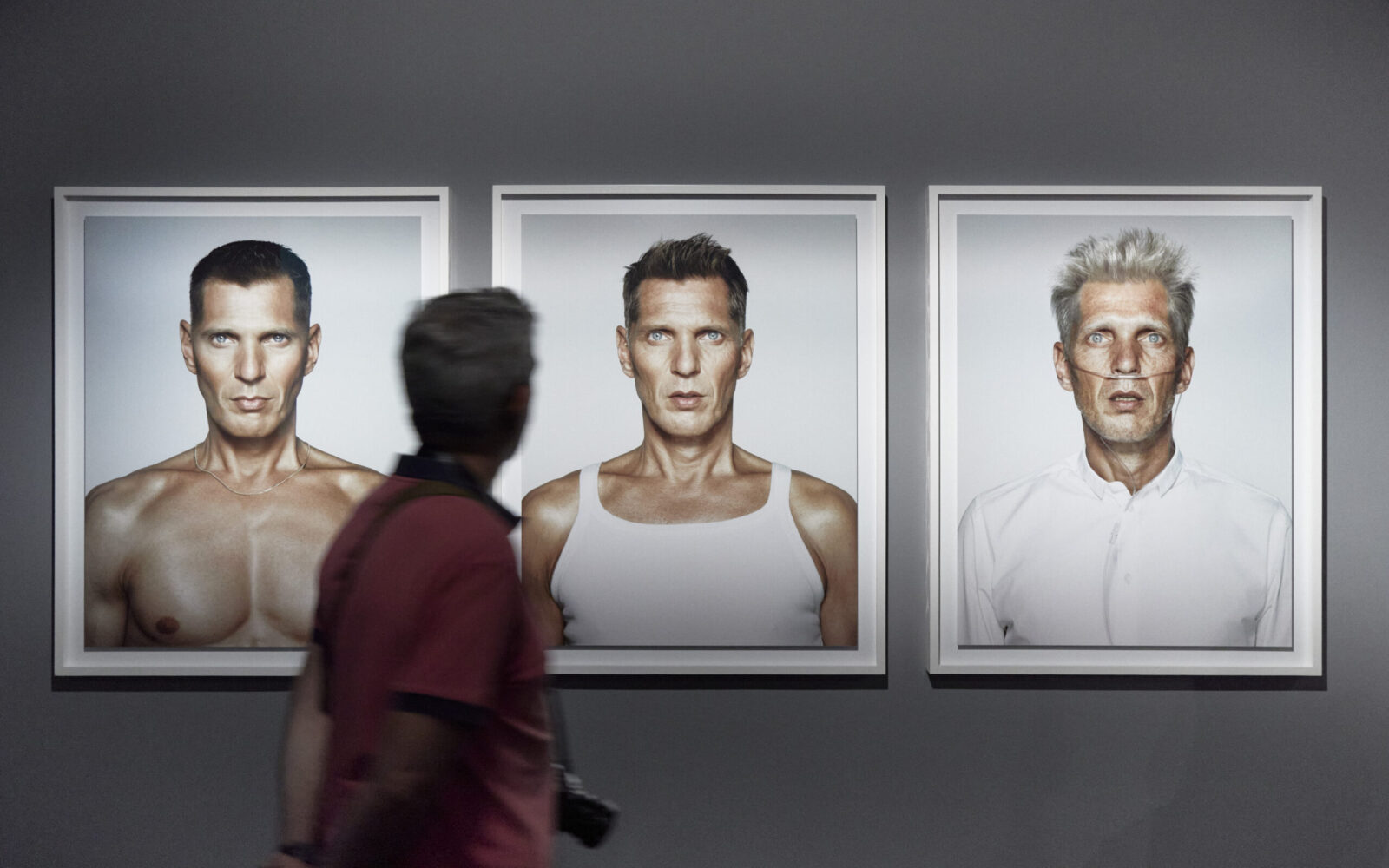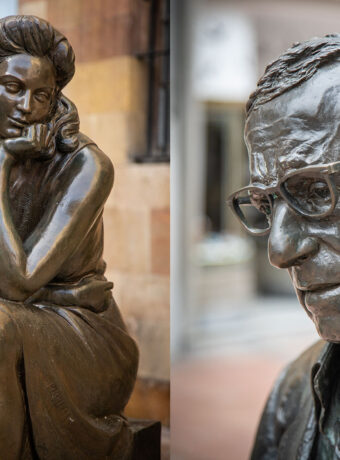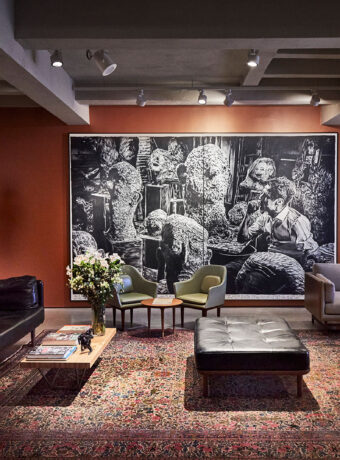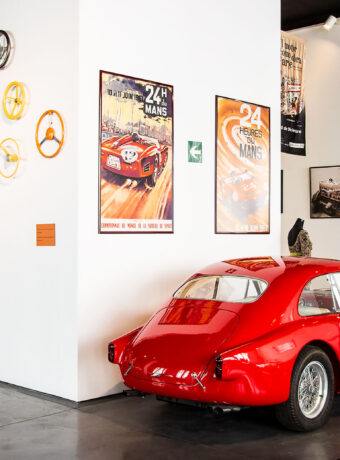This year’s edition of the international photography festival PhotoEspaña features both established and young local and international photographers. Threads are drawn from the past into the future, conveyed from poetic and aesthetic staging to raw and humorous realism.
Photo: Christian Grønne
TRAVEL DISCLAIMER: The trip to Madrid and accommodation was paid for by PhotoEspaña and the Spanish State Tourist Office. The organizations had no influence on the content of the article.
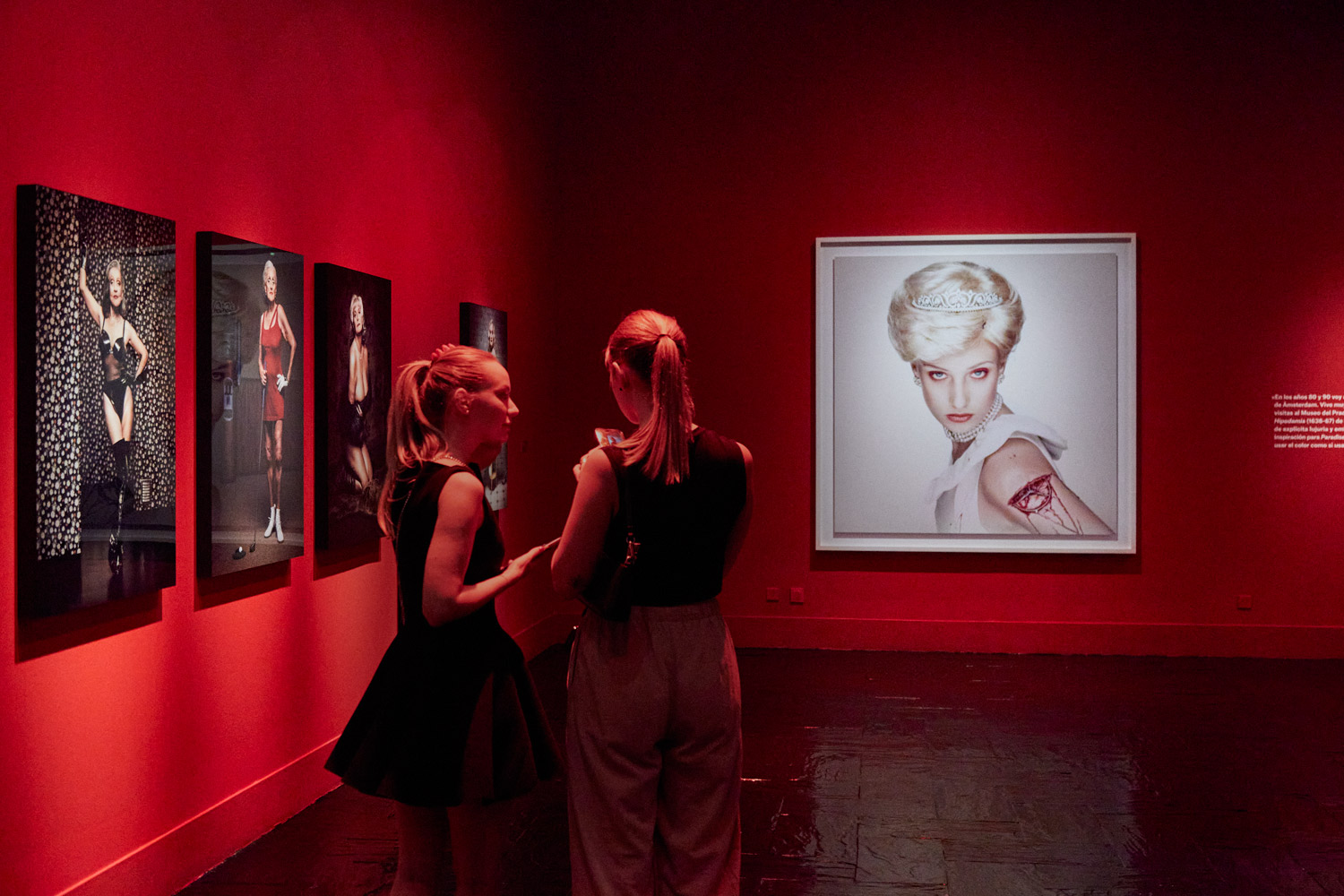 1 Erwin Olaf
1 Erwin Olaf
The Fernan Gomez Cultural Center in Madrid’s Salamanca district hosts the major retrospective Narratives of emancipation, desire and intimacy by Dutch photographer Erwin Olaf (1959-2023), who renewed the narrative aesthetic in photography and video.
The exhibition is a tribute to Olaf’s 40-year career, which the photographer himself helped plan when he died. Curated by Paco Barragan in collaboration with Olaf’s studio in Amsterdam, the exhibition features photographs, videos and video installations from the 1980s to the 2020s.
The exhibition is divided into four parts. 30 strong, stylized self-portraits make up the exhibition’s prologue. The first part focuses on Olaf’s social, economic and political activism. The second part, gathered in red rooms, revolves around the human body, explicit sensuality and sexuality. The third part is more introspective and deals with isolation, lack of communication, sadness and disappointment. This includes a series of Olaf’s latest nature photographs that focus on our relationship with nature and climate change.
On view until July 14, 2024
Fernán Gómez Centro Cultural de la Villa, Plaza de Colón 4
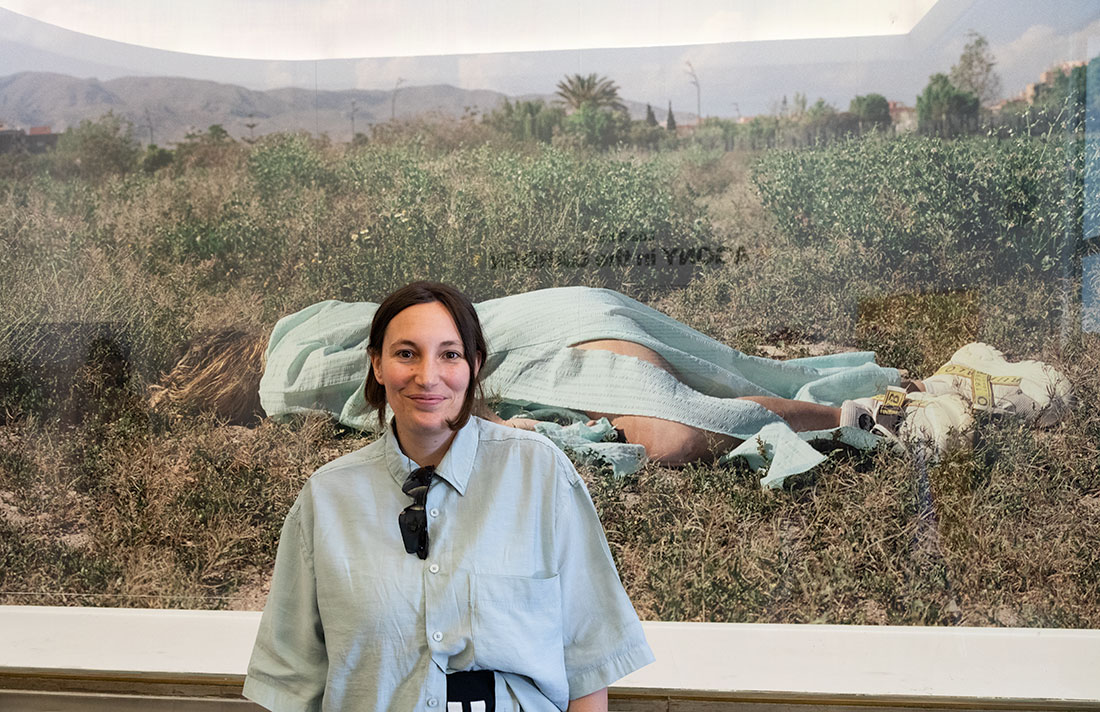 2 Lúa Ribeira
2 Lúa Ribeira
In Madrid’s Salamanca district, you can experience Spanish photographer Lúa Ribeiras’ (1986) exhibition Agony in the Garden at the Lázaro Galdiano Museum.
The Bristol-based Galician photographer explores the new trap and drill music scene in Spain, reflecting extreme hedonism and nihilism.
In a close encounter between young people, Ribeira explores a modern youth movement in post-pandemic Spain, reflecting on their relationship with contemporary unemployment, environmental crisis, violence and migration.
Ribeira has created a powerful, gripping and at times violent series that is very much in tune with the zeitgeist.
On view until August 25, 2024
Museo Lázaro Galdiano, C/ de Serrano 122
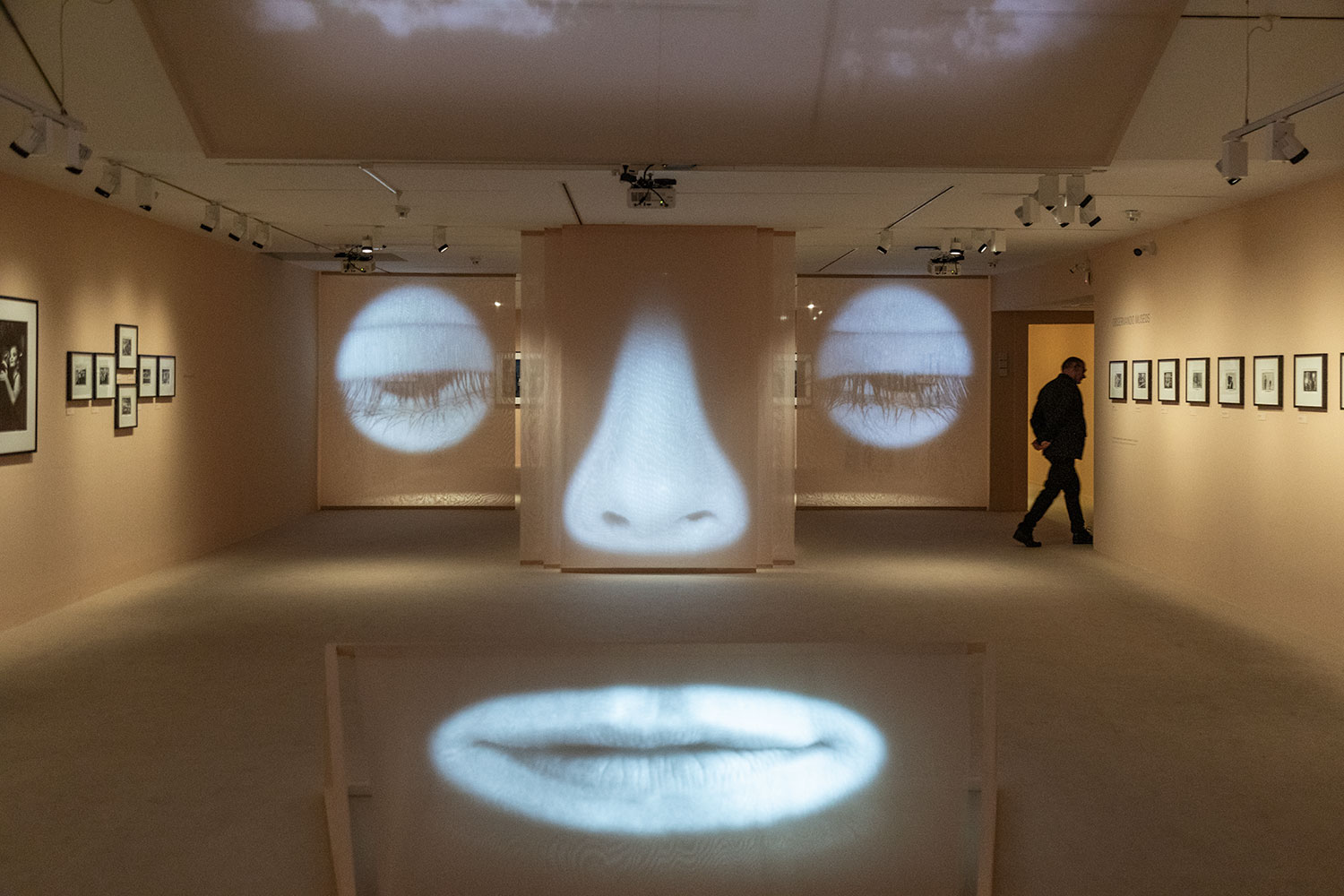 3 Elliot Erwitt
3 Elliot Erwitt
French Magnum photographer Elliot Erwitt (1929-2023) was best known for his black and white documentary photographs of people in intimate, absurd and sometimes ironic situations in their everyday environments.
The exhibition La Comedia Humana is a good concentration of the essence of Erwitt’s work. The exhibition consists of 135 works by the photographic artist that reflect Erwitt’s fascination with people, animals and forms.
The exhibition is divided into three sections. The first focuses on Erwitt’s snapshots. There are posed (and absurd) family photos, intimate moments captured in jazz clubs and bedrooms, and a group of women on a bench with the sign “Lost persons area”.
In the second part, animals – and especially dogs – are depicted, about which Erwitt has made statements:
“Dogs are like people, but with more hair.” Here we are invited into the world of dogs in a photograph of a mass of female feet. Erwitt believed that dogs are the creatures that see the most women’s feet.
Part three takes us on a tour of Erwitt’s fascination with shapes in abstract and surprising works.
The exhibition is on display until August 18, 2024 at Fundación Mateo Inurria Canal.
Fundación Canal, C/Mateo Inurria 2
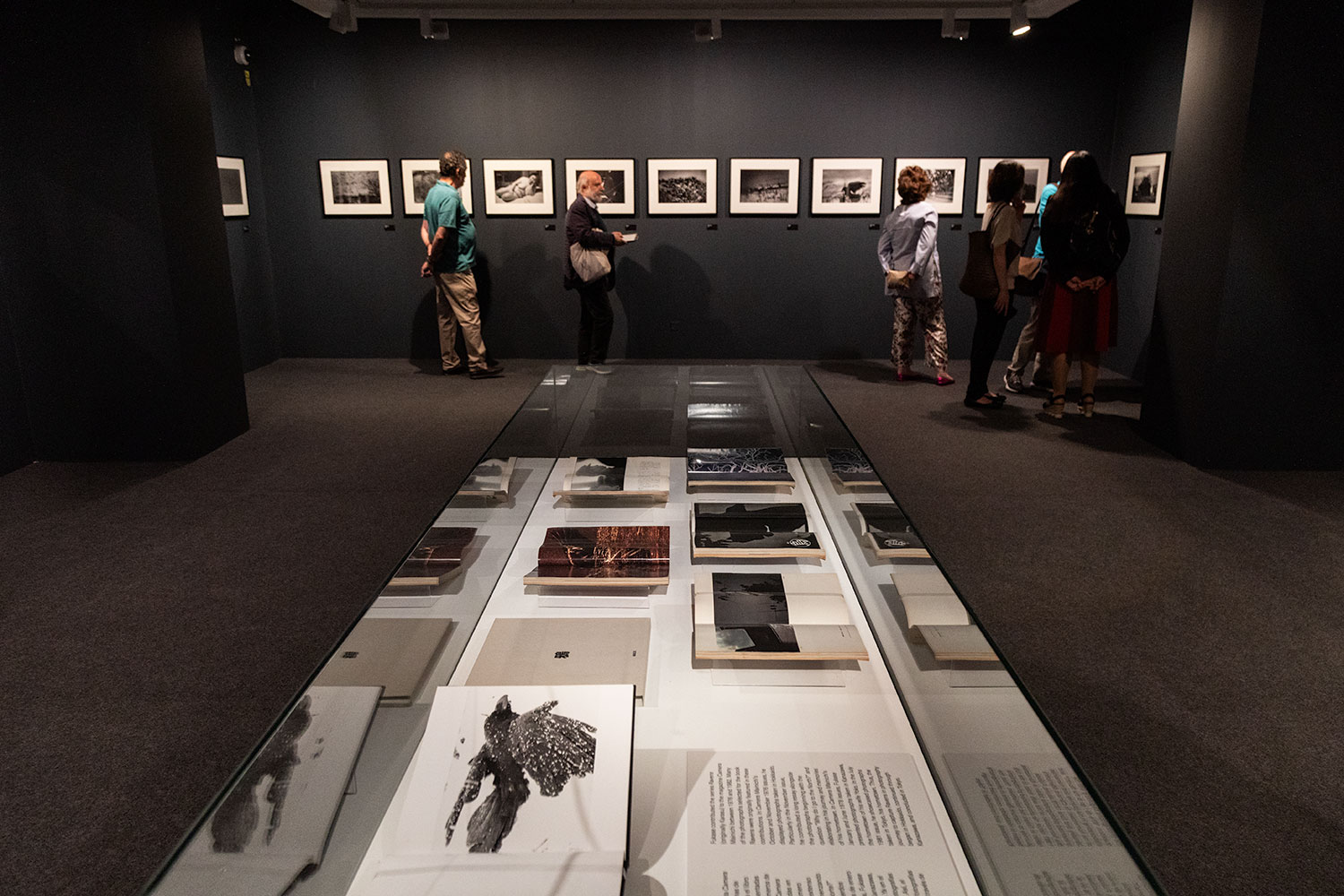 4 Masahisa Fukase
4 Masahisa Fukase
Japanese photographer Masahisa Fukase (1934-2012) became known for his black and white photographs of ravens. Fukase began photographing ravens through the train windows on his travels between Tokyo and Hokkaido. Along the way, he stopped at stations and photographed ravens in different environments.
The photographic raven journey lasted over 10 years, and in 1986 the project became a photo book, which was named the best photo book of the last 25 years by the British Journal of Photography in 2010.
In the series, Fukase explores emotional and personal themes in changing times. He transcends cultural and time boundaries and captures the duality between life and death.
In the small basement room, Minerva, in the cultural center Círculo de Bellas Artes, PhotoEspaña is exhibiting Ravens , a series of Fukase’s famous raven photographs. Fukase’s work is also featured in a selection of magazines and photo books. It’s a small but highly concentrated exhibition that conveys Fukase’s ability to combine creativity with technical skill.
On view until September 8.
Círculo de Bellas Artes, C/ de Alcalá 42
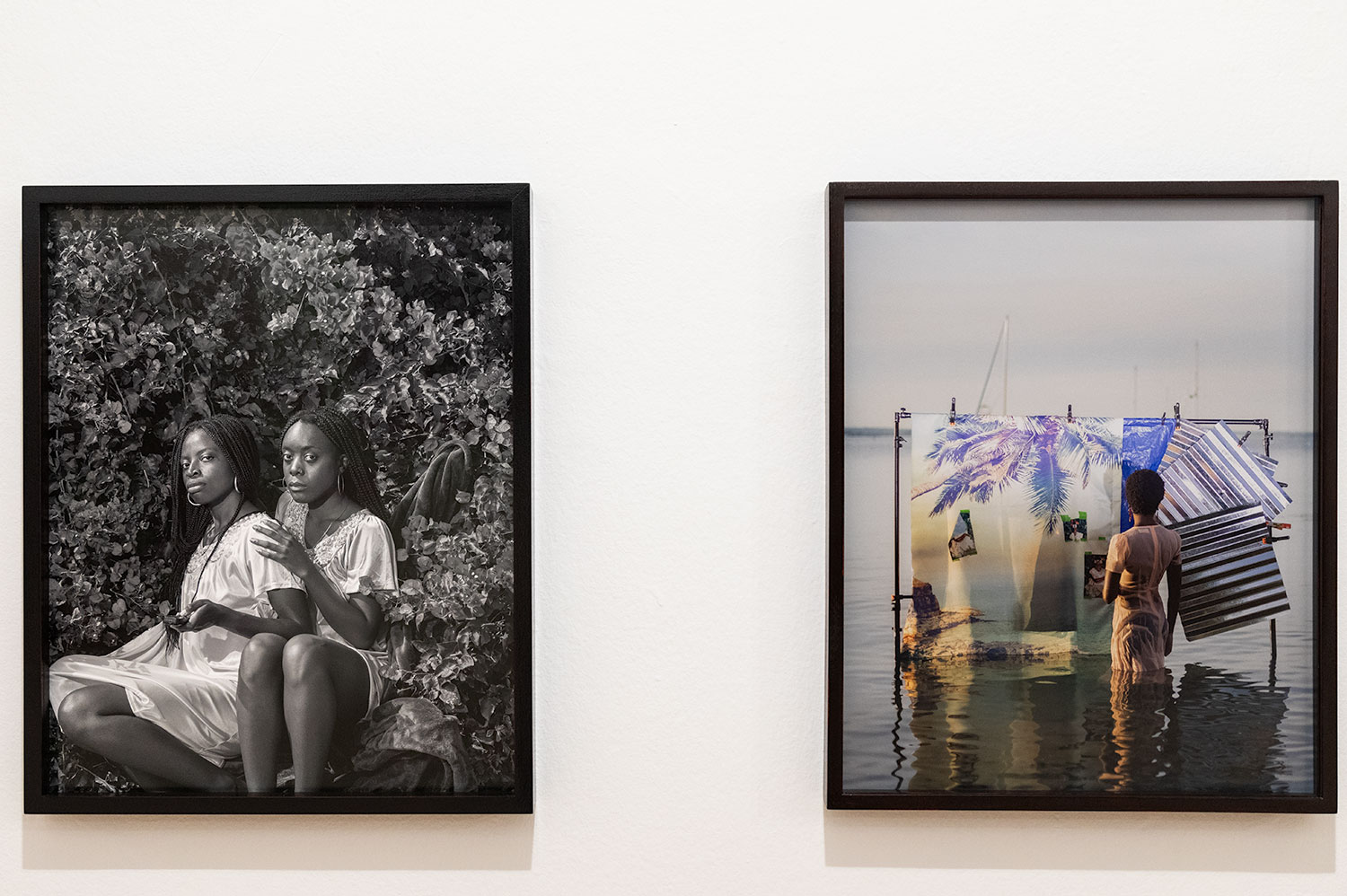 5 Widline Cadet
5 Widline Cadet
The Casa América Cultural Center, located opposite Madrid’s City Hall in Cibeles Square, is the gateway to American culture – especially Latin American, which they do in exhibitions.
Absurdly, the Haitian-born but US-based photographer Widline Cadet (1992) cannot attend the opening of his own exhibition Take this with you. The curator explains that this is because Cadet does not have a green card.
Take this with you is a poignant and very personal story, created from a combination of photographs of Cadet’s friends, family, strangers and self-portraits mixed with old family photos. There’s also a replica of a Haitian living room with family photos, handicrafts and a plastic-covered sofa.
Cadet revolves around kinship, the legacy of generations and the fragility of memory. She mixes reality with fiction, presence with absence and past with future. Together they create a coexistence between times and generations.
The interest in investigating family relationships arose when Cadet moved to the US and suddenly felt like she disappeared into another world. Today, her family and its history remind her of what she needs to remember to take with her when traveling back and forth between places.
On view until September 7, 2024
Casa de America, Plaza de Cibeles
About PhotoEspaña
- PhotoEspaña is an annual international photography festival. 2024 is the 26th edition and features 84 exhibitions by 293 photographers and visual artists.
- The majority of the festival takes place in Madrid’s museums, cultural centers and galleries, but there are also exhibitions in venues such as Alcala de Henares, Almeria, Barcelona, Cartagena, Santander, Valladolid and Segovia
- PhotoEspaña can be experienced until September 29, 2024. See the program on the festival website.
